Museum of the Rockies: 50 Years
Bozeman’s Museum of the Rockies just keeps getting better with age. This world-class museum is celebrating its 50th anniversary in 2007 with a roster of exhibits, educational events, and parties bigger and better than anything it has done before. It is also transforming itself with an eye on the next fifty years and beyond.
In 1957, the Museum of the Rockies was born as Dr. Caroline McGill’s remarkable gift to the people of Montana. In 50 years, the Museum has grown from a few small Quonset huts to an institution with global recognition. In the early years, the Museum was actually housed in several dairy barns. Merrill Burlingame, a co-founder of the Museum and a former head of the Montana State University History department, recalled cows going out one door as exhibits came in the other.
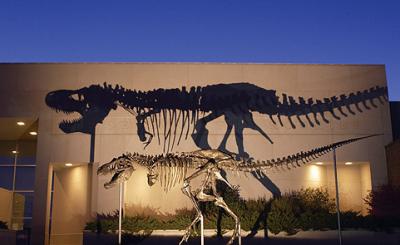
Today, the Museum stewards nearly 300,000 objects and 500,000,000 years of history. The world’s largest collection of fossils from North America is found under the Museum’s roof, along with strong core collections in western history, textiles, Native American artifacts, and photography. The Museum of the Rockies is the largest natural history museum in the region and it includes the Taylor Planetarium, and a Living History Farm on 11 adjacent acres.
For its 50th anniversary, the Museum is presenting an unprecedented slate of exhibits including Tutankhamun: “Wonderful Things” from the Pharaoh’s Tomb, Picasso: 25 Years of Edition Ceramics, Ansel Adams: The Man Who Captured the Earth’s Beauty, Masters of the Night: The True Story of Bats and more.
The Museum of the Rockies is part of Montana State University and serves as a strong cultural anchor. Nostalgia and affection for the institution run deep throughout the community. The Museum would not be possible without the thousands of volunteers who have served there over the years. There are also a surprising number of staff members who have served the Museum for 10 years or more. One of these long-time staff members is Dave Swingle. He has been affiliated with the institution for more than 50 years and he knew the founder, Dr. Caroline McGill. Swingle also served as the Museum’s director of education for 10 years. “This is a passionate institution that has never lost its sense of being the people’s Museum,” said Swingle.
Swingle has been researching the Museum’s history to create an exhibit, lecture, and film. Among the many things he has discovered is that the most recent phase of the Museum complex, which opened in 1989, was designed under the premise of “what if the museum hosted a blockbuster show like King Tut?” The Museum has certainly come full circle from Quonset huts and dairy barns to King Tut.
Abraham Lincoln once said, “In the end, it’s not the years in your life that count. It’s the life in your years.” The Museum is ensuring that it has plenty of life in its years, and that at 50 years young, it keeps growing and achieving even higher levels of success. “We are not middle-aged; we are still very youthful and forward looking,” Swingle said.
Renowned for its paleontology program, the Museum is home to well-known paleontologist Jack Horner, who was the scientific advisor to the Jurassic Park movies and has appeared on many Discovery Channel specials. The Siebel Dinosaur Complex represents his ideal of what dinosaur exhibits should be like.
Looking ahead, the Museum is undertaking ambitious plans to cement its position as a place of global preeminence in dinosaur paleontology. The Museum also will renew its commitment to exploring western history from a fresh perspective, and begin to create a new Yellowstone hall featuring the latest ground-breaking science. Increasing its capacity to serve future generations of learners with inspiring educational programs is an underlying and important goal.
The Museum of the Rockies is located just south of the Montana State University campus in Bozeman at 600 West Kagy Blvd. For more information call (406)994-2251 or visit www.museumoftherockies.org.
MUSEUM OF THE ROCKIES 50TH ANNIVERSARY EXHIBITS AND EVENTS
(EVENT HAS SINCE PASSED)
From March 3 through September 3 the highly anticipated Tutankhamun: “Wonderful Things” from the Pharaoh’s Tomb will be on display. From the artisans of the Pharaonic Village in Egypt, the Field Museum, and the Metropolitan Museum of Art, this dazzling collection of 126 reproductions faithfully preserves Tutankhamun’s treasures. Included in the exhibit are Tutankhamun’s magnificent state chariot, golden shrines, beds, thrones, jewelry, his spectacular funerary mask, mummy case, and the royal mummy. To celebrate the exhibit, the Museum’s Martin Discovery Room has been redesigned with an Egyptian theme. Children will be able to excavate Egyptian treasures in a dig pit and learn about hieroglyphics. They can also try on costumes, play with toys, and read books, all with an Egyptian theme.
Picasso: 25 Years of Edition Ceramics will be shown from March 17 through August 19. Pablo Picasso undoubtedly ranks as one of the most inventive, prolific, and influential artists of the modern world, and featured in the exhibition are a beautiful selection of 65 edition ceramic works created by Picasso in conjunction with the Madoura pottery workshop.
Ansel Adams: The Man Who Captured the Earth’s Beauty features 25 black and white framed photographs that demonstrate Adams’ interpretation of wild spaces and the western landscape. This exhibit will be open from November 10, 2007 through January 6, 2008.
Just in time for Halloween, a bats exhibit will roost at the Museum. Masters of the Night: The True Story of Bats will run from September 22, 2007 through January 27, 2008. Visitors can crawl through a cave, try to hang like a bat, and experience sound the way a bat would. This exhibition dispels popular misconceptions about bats, describes their ecological importance, and gives visitors an appreciation of the true wonders of the bat world. Special effects, multi-sensory interactive displays, a Gothic castle, and environmentally lifelike settings such as caves and rain forests present bats in mythic and real-life settings.
Along with these incredible exhibits, the Museum’s annual events that have become Bozeman traditions and family favorites will continue in 2007. For example, the ice cream social at the Living History Farm will be on July 4 and the Museum Wine Classic will be held on July 14. Celebrate Bluegrass on the Lawn and the Farm Festival on September 9.
There will also be many new events this year, a special lecture series, an anniversary party on May 5, and a Dinosaur Festival on June 9 to celebrate the opening of the Hall of Giants — the final installation of the new Siebel Dinosaur Complex. Visitors will experience some of the giants of the Late Jurassic and Early Cretaceous periods that lived in this region from 90 to 155 million years ago.
Dr. Caroline McGill, first in her class at Johns Hopkins University, was a major influence on Montana medicine through her practice in Butte. She also appreciated and collected Montana artifacts and wanted to found a history and science museum either at the University of Montana or at Montana State.
Dr. Merrill Burlingame, head of the MSU History Department, recognized the importance of Dr. McGill’s collections and provided the drive and political acumen to interest MSU administration in supporting a Montana historical museum.
Dr. R. R. Renne, president of Montana State University, was an energetic builder and modernizer of the university (e.g., the Field House, Reid Hall, several science buildings and upgrading of most departments). He almost immediately provided three World War II Quonset huts on the corner of 8th and Cleveland with the proviso that the Quonsets were only available for one or two years due to impending construction of Hapner Hall on that site.
By chance and good fortune I have been able to be associated with the Museum since its inception in 1956-7 in the old Quonset huts. I was 14, mowing lawns in the neighborhood, when Dr. Caroline McGill hailed me to a Quonset to help move a large glass-front knickknack case. I became a regular “drop in” helper both in the Quonset and later during its period in the MSU dairy barns on 11th and Garfield (1959 - 1970), the current site of the MSU departments of Art and Architecture.
For 11 years the museum succeeded in its decidedly “funky” and dangerous setting. By 1971 the barns had to make way for the new MSU Fine Arts building. In the meantime, formal incorporation and renaming occurred. Led by Dr. Burlingame and others, the Museum of the Rockies began its development into a major regional museum in two stages: twin fireproof “pods” were built in 1972 and were incorporated into the present day museum building expansion of 1984-9 under the dynamic leadership of Dr. Mick Hager.
The museum is not just a set of exhibits and collections; it is a major research department of the university, renowned for its study of paleontology by the research team led by Dr. Jack Horner (a MacArthur Fellow.) It is a place where 100,000+ visitors experience six to twelve new exhibits yearly; 19th century farming on the Tinsley Living History Farm, astronomy in the Taylor Planetarium, fine arts, photography, regional history, and live programing all year.
In going through 50 years of photographs, notes, exhibits designs, one is struck by the great number of happy people finding expression for their curiosity, their skills, their extraordinary energy. Of course the small fry love the “safe monsters” (dinosaurs) but quite elderly volunteers also find a place to demonstrate their specialties and values. The natural and human history of the Northern Rockies is now protected in a climate-controlled high security 40,000 square-foot modern building.
And, if there had been no Caroline McGill and Merrill Burlingame and R. R. Renne to start a museum? We would not yet know that dinosaurs were social, warm-blooded, and simply magnificent. We would not have an archive of 80,000 historical photographs. We would not have a living history farm or one of the world’s top 20 planetariums. We would not have the economic effect of 100,000 annual visitors. And instead of King Tut, we would just have more houses on the corner of Kagy and 3rd.
~ Jamie Cornish is the director of marketing and public programs at the Museum of the Rockies in Bozeman. Before moving to Montana, Jamie worked in New York City at Sesame Workshop conducting audience research on programs such as Sesame Street and Dragon Tales. In addition, Jamie has worked for the Walt Disney Company developing publicity and marketing strategies. She has a B.A. from Princeton University, as well as an M.Phil. and a Ph.D. from Cambridge University in education. She lives in Bozeman with her husband and two children.
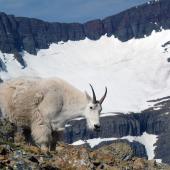
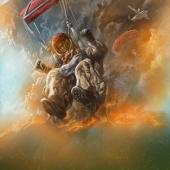
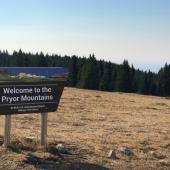
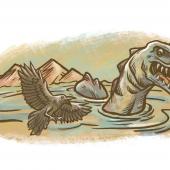

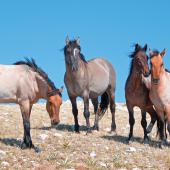
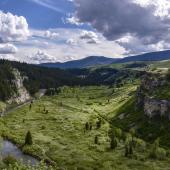
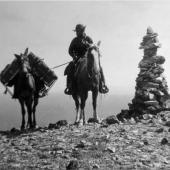
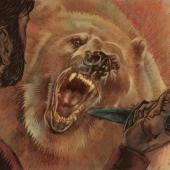
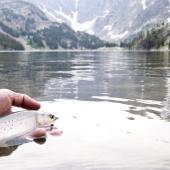

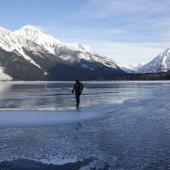
Leave a Comment Here